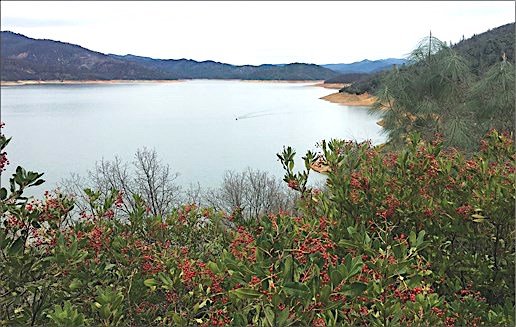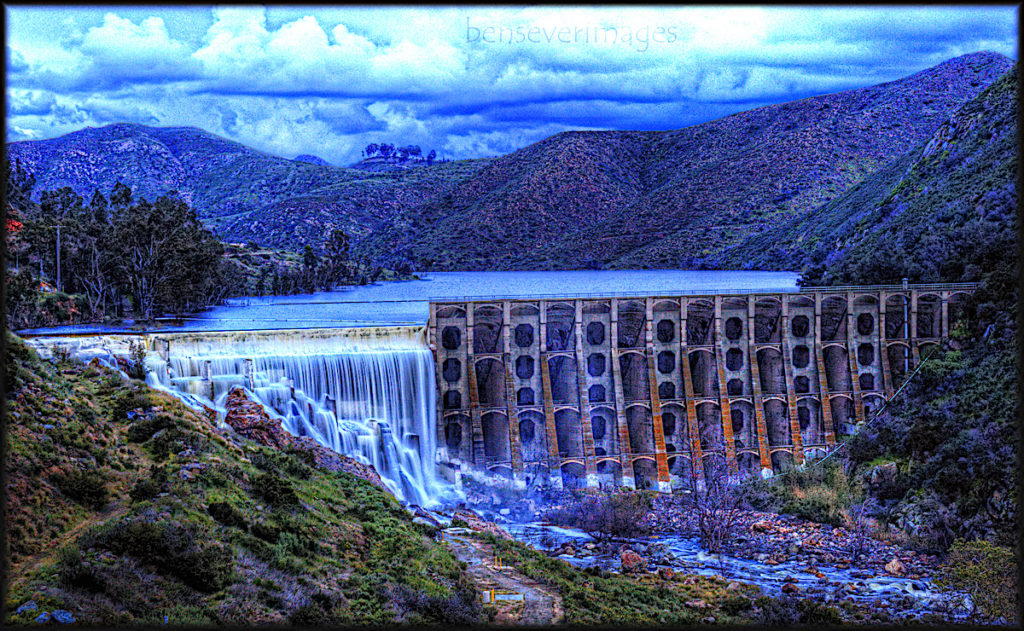John Van Doorn, former business editor of the North County Times, managing editor of the New York Post and a New York Times editor, among other avocations, had this thing about rain.
“Wet stuff,” Van Doorn would say. “If anybody around here uses the cliche of ‘wet stuff,’ for any reason, under any circumstances, they’re fired.”
With that in mind, Escondido, North County and the San Diego region has had a nice amount of rain the last two months after many weeks, months and years of drought, so let the rain event good stuff continue, many people say.
Thursday, Jan. 31 featured a nice little pre-soak as it came in like Flint, as the fast-moving storm dropped about an inch of the wet, er, watery droplets of stuff around Escondido, San Marcos and Vista. County deserts, and you know who you are, got around two-tenths of an inch of the you know what, according to the National Weather Service office at Rancho Bernardo.
For the record, In a 24-hour period ending around 3 a.m., Thursday, the highest precipitation totals were 1.09 inches in La Mesa; 1.05 in Santee; 1.02 in Bonsall; 0.99 of an inch in Oceanside; 0.85 in Fallbrook 0.82 in Encinitas and 0.78 in Escondido, according to the Rancho Bernardo weather office.
Other rainfall totals included 0.76 of an inch in Julian; 0.62 near the San Diego International Airport; 0.57 in Ramona; 0.32 in San Ysidro and 0.19 inches in Borrego Springs.
Buckle up for more of the wet…
?Here We Go Again!! ❄️
More rain and mountain snow expected later today into Saturday with our next storm. Locally heavy rainfall and areas of flooding are possible. Be careful if traveling and heed advice from local officials! #cawx #SoCalRain #sayitaintsnowcal pic.twitter.com/hkZNV7IsKU
— NWS San Diego (@NWSSanDiego) February 1, 2019
For ducks, and other lovers of free water falling from the sky, the next few days should be just quackariffic. The next storm is expected to swamp thing into the region Friday night with the heaviest round of precipitation expected to begin Saturday afternoon, according to forecasters.
Inland-valley areas could get anywhere from 1 to 1.4 inches of rainfall Saturday while coastal areas will see around 1 inch, NWS meteorologists said. Between 1.4 and 2.2 inches is forecast for the county mountains and desert areas will get around a quarter-inch of rainfall.
“Low-water crossings in many areas will likely flood at some point as larger rivers and streams more quickly develop channel flow, including the San Diego River in Mission Valley,” National Weather Service forecasters said.
Rain is expected to continue through Sunday afternoon then the third storm cell will bring lighter precipitation Monday morning through Tuesday, federal forecasters said, adding that the break between the final two storm cells is not expected to be as definitive as after the first.
Here’s the statewide perspective

A key facility for the federal Central Valley Project, Shasta Lake has seen its water storage rise to 95 percent of the historical average following January storms./Ned Coe
“Storms during the first three weeks of January brought seasonal rainfall and snowpack levels to average or more, increased reservoir levels and brought cautious optimism to California farmers, who hope to see improved water supplies in the coming year,” said Christina Souza of the California Farm Bureau Federation.
After seeing the Sierra Nevada snowpack increase from 70 percent of average on Jan. 1 to 105 percent of average at the start of this week, farmers said they’re encouraged—but noted the winter still has a long way to go, according to Souza in Ag Alert.
“We’ve received fair precipitation up until now, so we’re hopeful it continues for another two months,” said Bill Diedrich, who chairs the board of the Los Banos-based San Luis Water District.
Diedrich farms in Fresno and Madera counties, growing nut crops, pomegranates and processing tomatoes, and said he faces varying degrees of water supply certainty, depending on where his fields are located. The San Luis district and other Central Valley Project contractors south of the Sacramento-San Joaquin Delta ultimately received a 50 percent supply from the CVP last year, and Diedrich said he hopes for something similar in 2019.
“We know that the allocation is likely not going to be dire or drastic such as 0 to 10 percent, but I think most people are feeling pretty confident that there’s going to be an allocation somewhere between 40 and 45 percent,” he said. “It could go even higher, but there are supplemental arrangements that we have made in the district to where we are going to be fine.”
Dan Errotabere, who farms permanent and row crops in Riverdale in the Westlands Water District, said the recent accrual of snowpack and precipitation have taken some pressure off. But, he said, many unknowns remain going into the year, including how requirements for fishery flows and other environmental requirements could affect CVP operations.
“You look at the weather and hope it continues to be favorable in terms of a normal or better-than-normal year,” Errotabere said, “but there are so many other components that enter into this decision-making process that lost opportunities can happen very quickly. Any time you have uncertainty, there is no confidence with our processors on how much can you plant.”
State reservoirs near normal

Lake Hodges Dam, 2003 overflow/Ben Sever
The U.S. Bureau of Reclamation is expected to issue an initial 2019 allocation for CVP contractors in mid-February. In the meantime, the California Department of Water Resources reports that federal reservoirs such as Shasta—the state’s largest reservoir—contain close to average supplies at this point in the season. DWR spokesman Chris Orrock said Shasta Lake stood at 95 percent of the historical average for the date.
Lake Oroville, the principal State Water Project reservoir, was at 60 percent of average storage, having been kept to a low elevation during construction. San Luis Reservoir, a joint federal-state project, was at 109 percent of its historical average, Orrock said.
For SWP contractors, DWR announced last week it had increased 2019 allocations to 15 percent, up from the initial 10 percent, and said the figure would be further revised as conditions change. The final SWP allocation for 2018 reached 35 percent.
In the San Joaquin Valley, Diedrich noted that improved rainfall and snowpack will also help groundwater supplies.
“Every time we have surface water supply it benefits groundwater recharge, because you are not running the pumps. That is the best way to put water in the ground,” he said.
As someone who farms in different water districts and who deals with various aspects of California water, Diedrich said most of his attention is focused on groundwater sustainability and the Sustainable Groundwater Management Act. Under SGMA, local groundwater sustainability agencies must develop plans to guide management of groundwater in basins and sub-basins statewide. GSAs overseeing overdrafted basins have until Jan. 31, 2020, to develop groundwater sustainability plans, and other medium- and high-priority basins have until Jan. 31, 2022, with the goal of achieving groundwater sustainability within 20 years.
“Our biggest concern is how the GSA is going to shake out in Madera County,” Diedrich said. “We farm in Madera Irrigation District, which is a GSA, but we also farm some in the ‘white area,’ or out-of-district area, so that’s the county GSA and a whole different story. We are trying to get all of the engineering done so that we can have a (groundwater sustainability plan) available for review, so it can be approved in 2020. As water issues go, that is where we—me and my sons as farmers—have the greatest exposure.”






Be the first to comment on "Water, water everywhere; it’s a good thing"